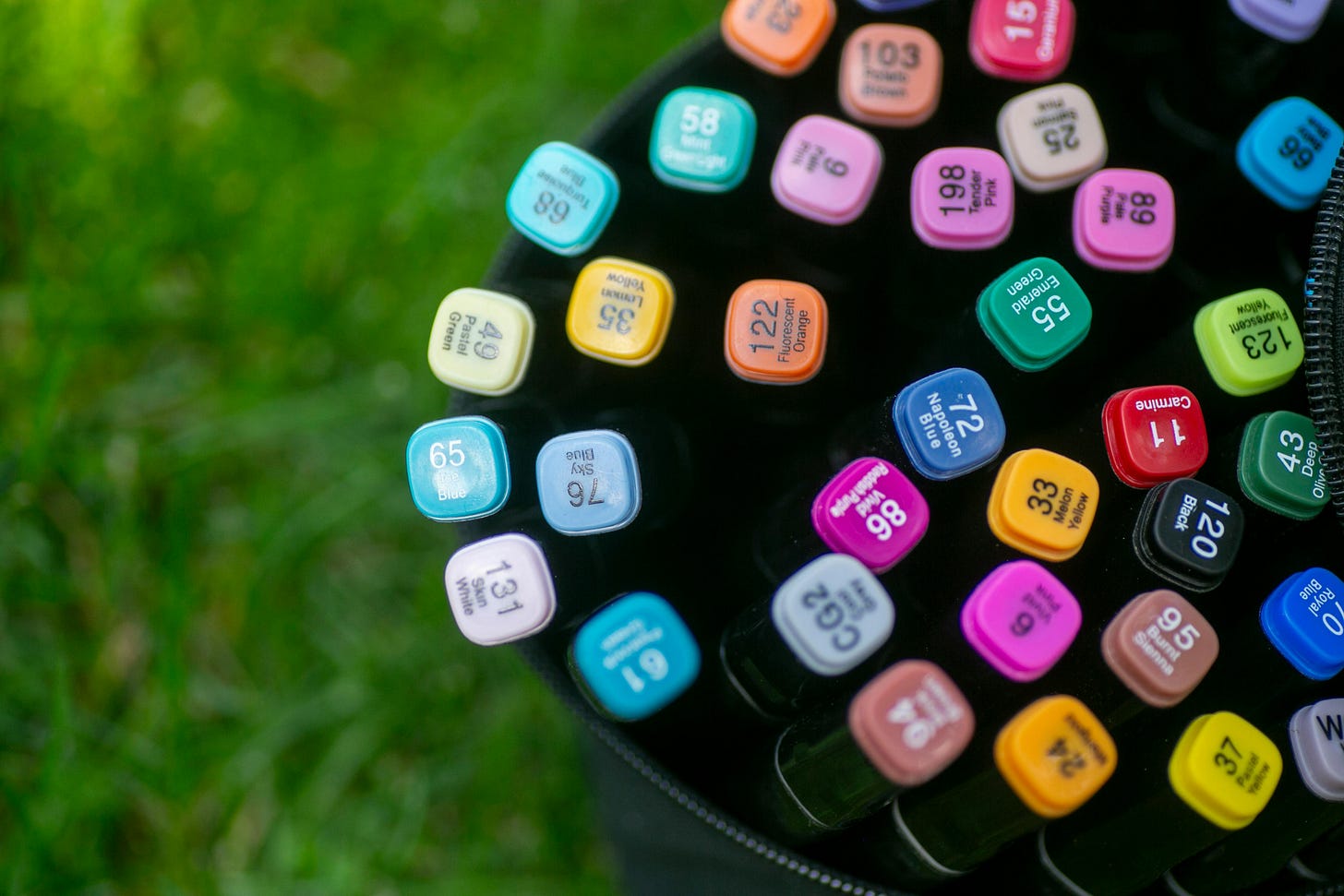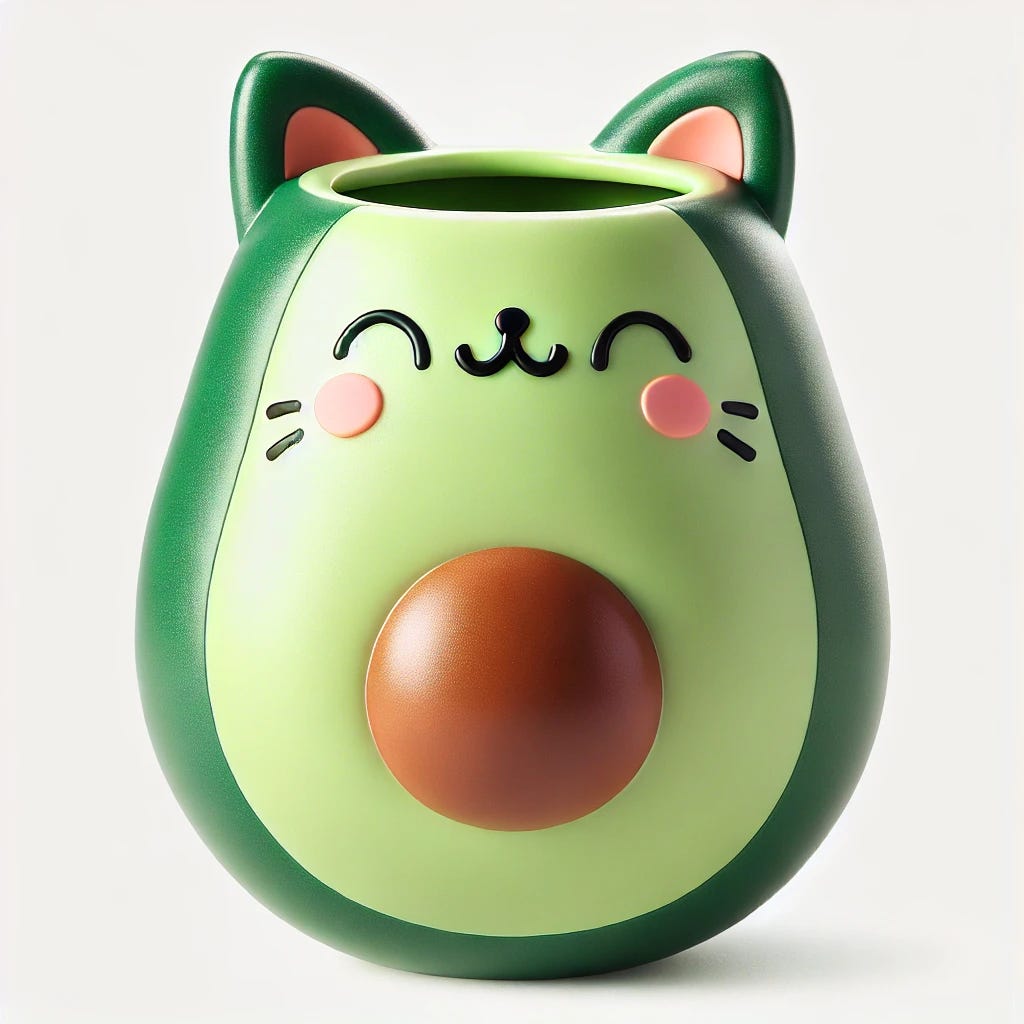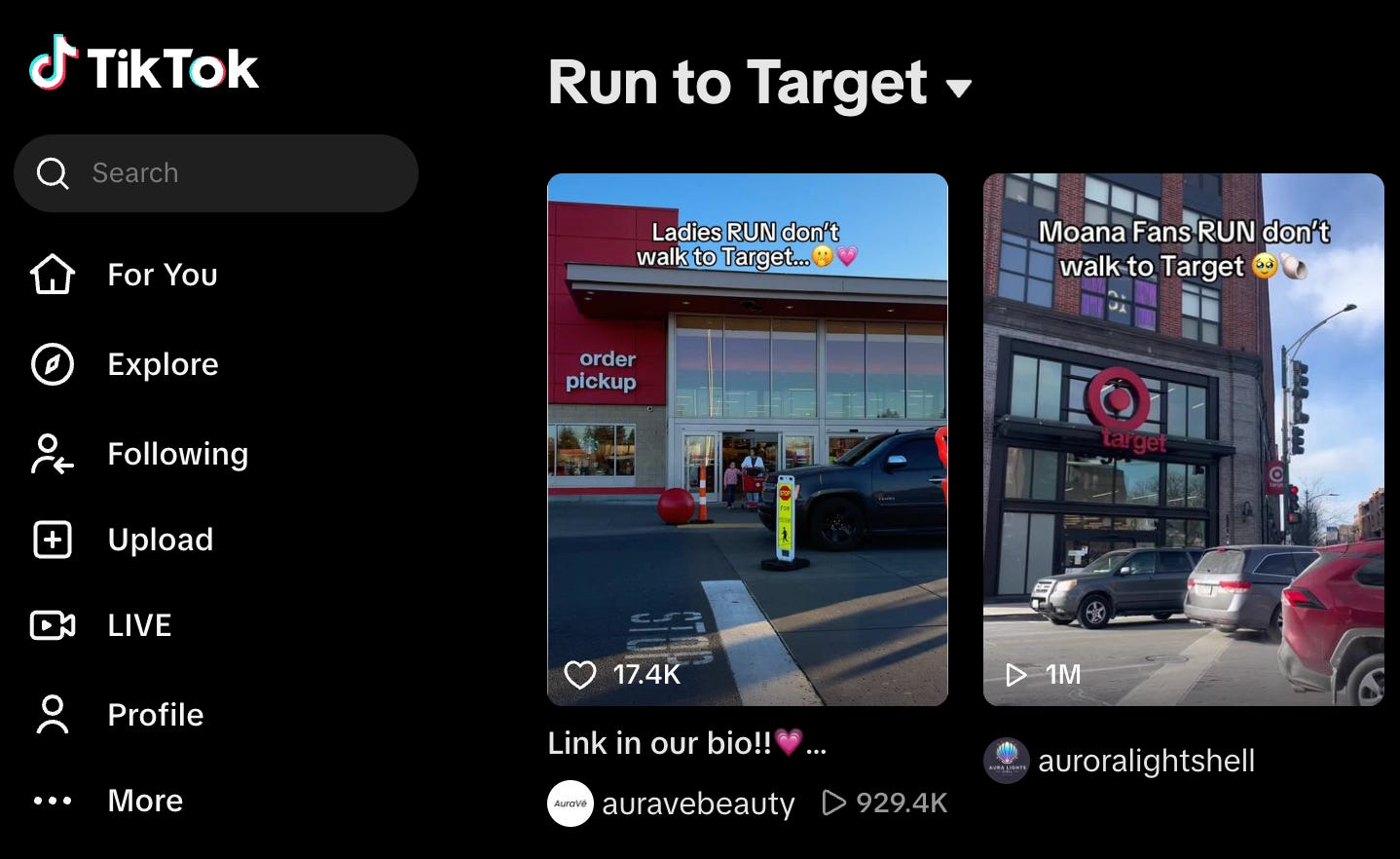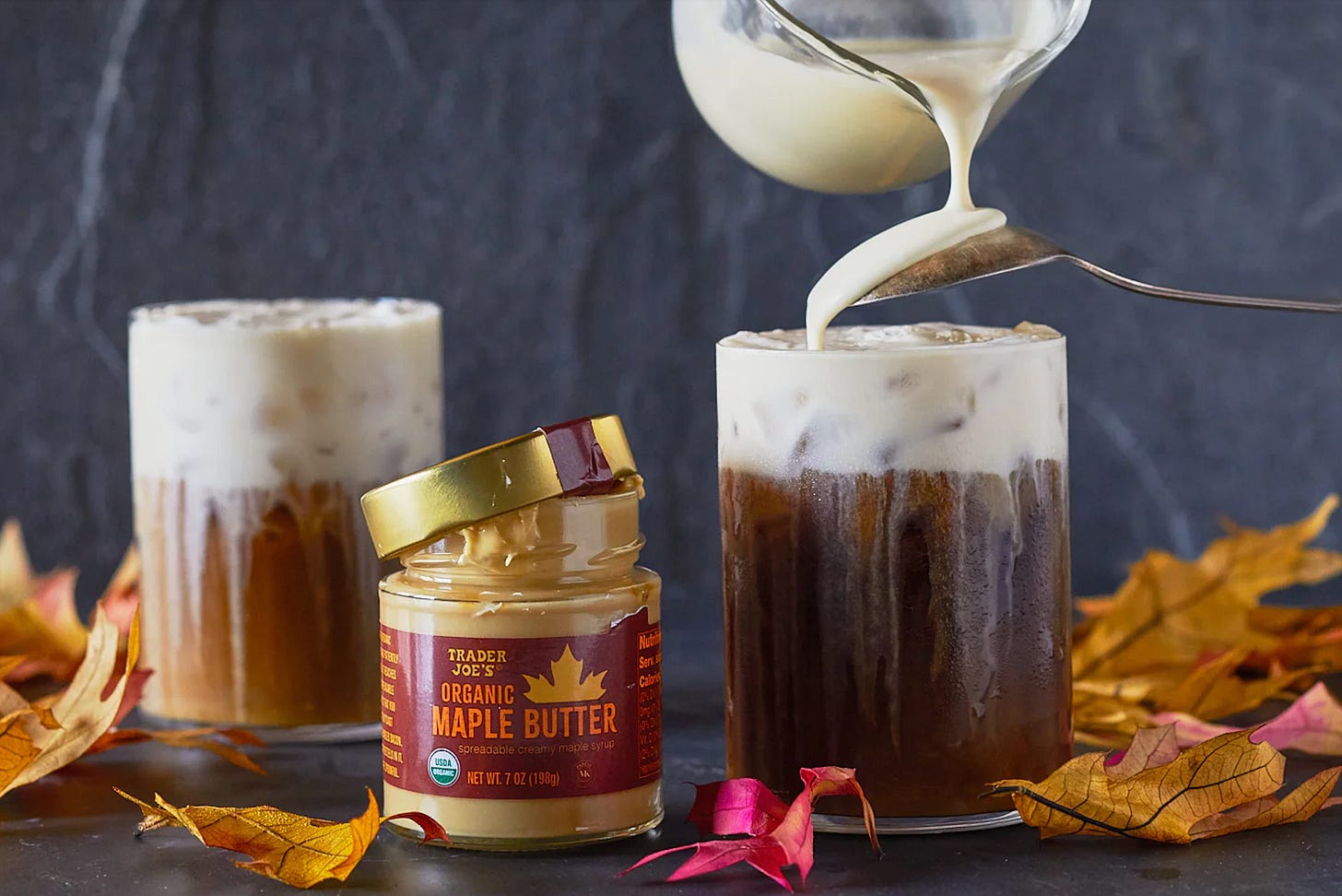How many colors can you name? Real quick – Roy G. Biv plus some of the weirder ones. Chartreuse for Brat summer. Cerulean from Meryl Streep’s “The Devil Wears Prada” monologue. Scheele’s green because the Victorians loved it but it had literal arsenic in it.
I hit about 30 and stopped. But for the past few months, TikTok’s been insisting I buy a 320-set of alcohol markers. In one of my recent favorite corners of the internet, mostly adult women explain the hyper-detailed, intricately patterned pages they’ve completed in coloring books with words like “cozy,” “cute” and “friends” in the titles.
Since there remain some shards of joy in my soul, I find it delightful that these folks can mimic wood grain and tile and even glitter as they color scenes of animals like hippos and rabbits watching TV or camping.
And yet, I recognize this as one more moment where TikTok is trying to get me to buy something I don’t need, by making my brain feel like I do.
Similarly, TikTok regularly serves up shopping videos that typically trumpet the same message: RUN to Target. Or Costco. Or wherever. These POV videos show people holding shit from the dollar sections up to their camera, rotating it, and insisting that you HAVE to buy this SUPER CUTE vase shaped like an avocado but also a cat (?) before they’re all gone.
My reptile brain lurches: “Wait, do I need to go to Target? Right now? For the avo-cat-o vase?”
The answer is rarely yes. And by and large, when I’m looking at any of these items IRL, I have zero urge to buy them. (FYI, I am not going to Target at all these days.)
Granted, the fact these videos are on my feed probably says something about me that I’m not in the mood to unpack. But I’m not alone. There’s no way to track the conversion from RUN TO COSTCO video to sale, but Americans spend about $32 million each day on the TikTok Shop, according to data from Capital One, out in March. Though you might think of it for the dance trends, TikTok has become the fourth most popular social commerce site in the U.S.
What is that lurch, though? That siren call, whether it’s more markers than you could possibly ever need, or the trinkets galore in the Target Bulleyes Shop?
“The human brain was not designed for this world,” said Pamela Rutledge, director of the Media Psychology Research Center, a nonprofit that studies media technologies and their effects. As much as any of us might think we’re immune, the media we consume, even passively, can influence us.
Someone who colors
It turns out, you can separate these types of videos into two buckets.
On the alcohol marker front, it’s all about aspiration.
These videos often feature soothing lo-fi music and the neatly organized, aesthetically pleasing desks of people who SOMEHOW find time to sit and color.
Maybe you sit there on your phone, in the dark, surrounded by empties of lo-mein and that little twinge in your heart says, “I want to be someone who colors.”
“It’s sort of like watching a cat sleep,” Rutledge said, “I wish I could relax that much.”
The other bucket of videos plays right into our caveman impulses.
“We are hardwired to react if we think something is scarce,” Rutledge said. So when an urgent voice in a video tells you to rush out and grab something, you might believe it, if only for a split second.
In his 1984 book “Influence: The Psychology of Persuasion,” psychologist Robert Cialdini identified six principles in human behavior that drive people to say “yes.” In addition to scarcity, there’s the idea of social proof or validation.
“Taking advantage of social validation, requesters can stimulate our compliance by demonstrating (or merely implying) that others just like us have already complied,” Cialdini wrote in a 2001 “Scientific American” piece called “The Science of Persuasion.”
Perhaps seeing someone sweep through HomeGoods, pleased with the purchase of a set of Anthropologie drinkware dupes motivates us to go out and get them too.
Another factor might be that so many of these videos are shot in a POV style. It’s easy to feel like we’re there, and Rutledge suggested they might activate the mirror neurons in our brains, which fire in the same way when we perform an action or observe someone else performing the action. Most of the time, this is a good thing – it lets us learn by imitating and understanding what other people do. In the context of a shopping video, if they’re shopping, we are also kind of shopping, too.
Caveman + wallet
Understanding how these videos affect our brains is crucial, but it’s hard to ignore how they fit into a wider landscape of unbridled consumerism fueled by dopamine and nestled snuggly in the attention economy.
Think of the crush around Stanley Cups. The wildness of buying tens of something that’s supposed to be sustainable drinkware. Two years ago, a student asked me to look into #WaterTok, a universe of videos of folks combining flavored drink packets to create their “waters of the day.” I am STILL thinking about #WaterTok. Not because of the killjoys pointing out the sugar content of the drinks (live your lives, people!), but because of how many creators seemingly bought hundreds of packets and bottle after bottle of syrup.
How much of anything do you need at one time?
And for the RUN videos, for each one that legitimately points to an interesting product (hello, Trader Joe’s Maple Butter), there are countless others indiscriminately highlighting whatever the newest inventory is.
It’s not curation or informed recommendation driven by experience or expertise. If you feature EVERYTHING in the aisle, there’s no point – except to rack up views from people hoping the next holiday decor drop at Michael’s will make the days pass a little easier.
These videos earn creators money. I don’t begrudge anyone trying to survive, but it’s another content type to gird your primal impulses against.
A win for landfills
Comedian George Carlin did a bit in the ‘80s about how we all need our stuff. Even when we travel, we’re just pairing down stuff from our main collection of stuff so we can feel better and maybe more secure.
Quarter zip Sherpa pullovers. Seasonal candles. Plastic bathroom organizers. A planter shaped like a disco ball.
“Many people aren't savvy enough to stop and ask, ‘who's, who's benefiting from this? Why are they showing me this? What is the appeal?’” Rutledge said.
The point will never be to hide – though I’ve taken to aggressively scrolling past anything I want less of on my FYP, including the RUN videos – it’s to stay engaged and keep asking the kinds of questions that keep us from caving into our brains, which still just want to store what feels scarce in order to survive.
Marigold. Vermillion. Mauve. I’m barely at 10% of that 320-marker set. Admittedly, I’m curious about just how many ways you can name a blue. But for now, at least, the only scarcity I’m interested in is seeing fewer of those videos.
This month’s (P)doom: < 6%.
– Erin






